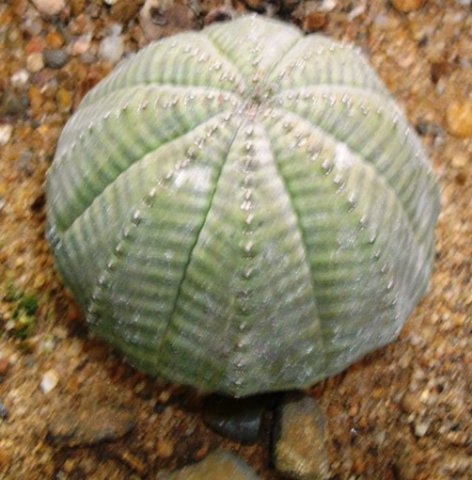Euphorbia obesa geometrically precise

Euphorbia obesa, previously E. symmetrica, the Willowmore klipnoors (stone spurge) in Afrikaans, is a striking succulent growing in the form of a flattened hemisphere. Straight lines from the apex radiate out, delineating the borders of equal sectors in the regular structure. Each vertical section has a row of dots along its midrib, the marks left by old, discarded cyathia. New cyathia always appearing on the ridges right at the top in the centre.
This plant was looking good for a picture in the greenhouse of the Botanical Garden of the University of North-West at the Potchefstroom Campus (www.cactus-art.biz).

